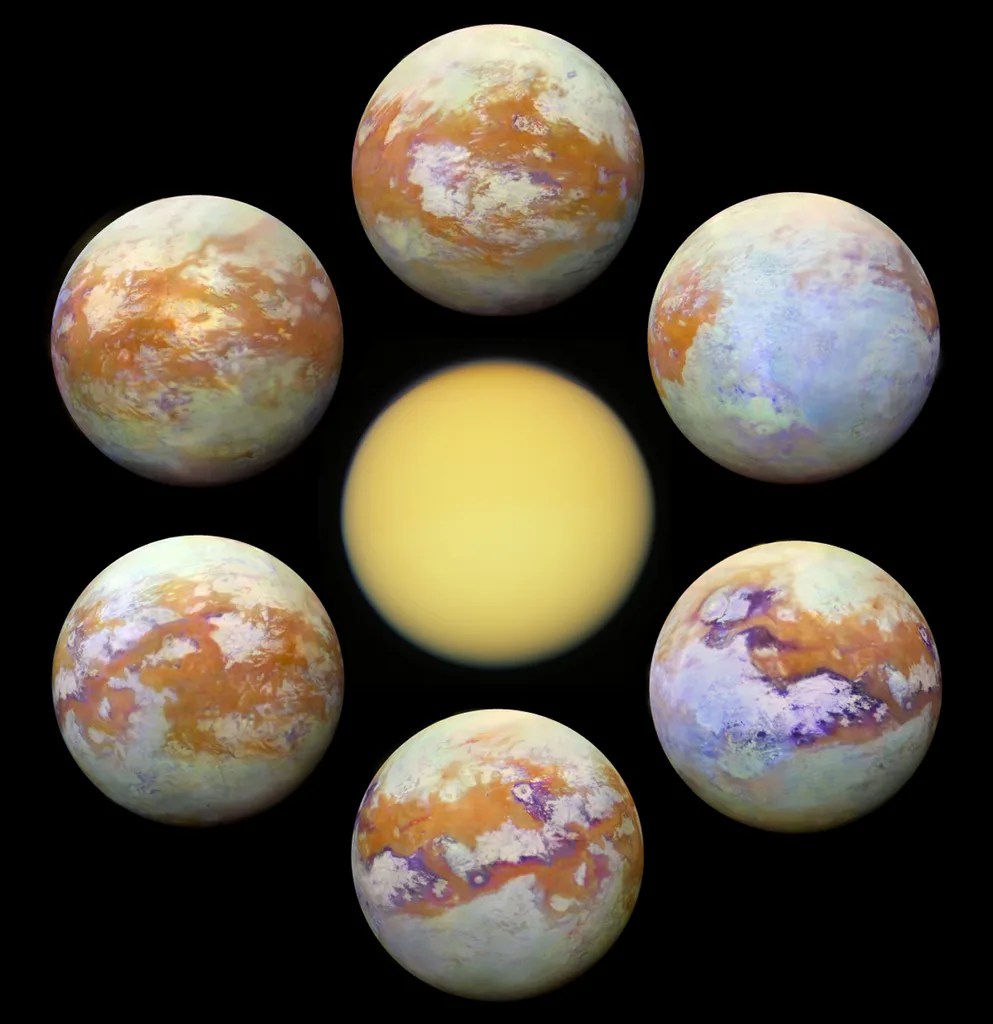4 min read

The Final Cassini Science Symposium was held August 12--17 at the University of Colorado in Boulder, Colorado. Hosted by the Cassini Project and the principal investigator for the Ultraviolet Spectrograph (UVIS), it included talks from all five Cassini disciplines (Saturn, Rings, Icy Satellites, Titan, and Magnetospheres), with a focus on new results from the Grand Finale orbits.
Wednesday, Aug. 1
A paper by Cassini engineers, titled "Cassini Power during the 20 Year Mission and the Final Plunge into Saturn," was published in the AIAA Journal of Spacecraft and Rockets.
Saturday, Aug. 4
Saturn dominates the sky these evenings -- by its beauty, if not by its brightness. From Earth's northern hemisphere, it appears high in the south as the sky darkens. With its largest moon Titan, the view in nearly any sort of telescope is rewarding.
Monday, Aug.13
The Final Cassini Science Symposium included the scientists, and some engineers, from Cassini this week. Each discipline session began with invited tutorial talks that were interdisciplinary and geared toward non-experts, while poster sessions were held in the late afternoon. Over 125 people attended, including many young scientists who had recently begun their research on Cassini data. Several interdisciplinary talks inspired spirited discussion and debate on topics such as the age, young or old, of the icy satellites and rings. The Symposium highlighted the diverse and complex science that is the hallmark of a flagship mission such as Cassini. Results shared during the Symposium will be published in an upcoming special edition of the planetary science journal Icarus.
Icy particles, each one a satellite of Saturn, rush around the giant planet in a thin sheet while interacting with each other and with some of the outer moons. In an image featured today, ring particles take from about five hours on the inside track, to nearly fifteen hours in the outer rings, to complete their orbits: https://saturn.jpl.nasa.gov/resources/7849/translucent-arcs.
Wednesday, Aug. 15
The Cassini Project Scientist gave a compelling and well-received public lecture on Cassini science highlights and future missions, at the University of Colorado, Boulder.
Thursday, Aug. 16
Cassini provides one-page illustrated summaries for NASA that describe recent findings. One such "nugget" summarizes a paper in the journal Nature about large organic molecules coming from Saturn's small but very active icy moon Enceladus (the paper itself may be found by searching on the key, doi: 10.1038/s41586-018-0246-4):
"Data from NASA's Cassini spacecraft has revealed that fragments of complex organic molecules, [each] comprised of hundreds of atoms, originate from Saturn's icy moon Enceladus. Previously, Cassini detected relatively common organic molecules at Enceladus that were much smaller. These larger molecules can originate from geothermal processes, primordial material in some meteorites, or life. The presence of large complex molecules, along with liquid water and hydrothermal activity, bolsters the hypothesis that Enceladus's ocean may be a habitable environment for life. Jets of water ice, complex organics, and other contaminants are jettisoned into the space environment surrounding Enceladus… [C]omplex organics formed inside of Enceladus bubbles up, becomes coated in water ice, and is expelled into space to be tasted by Cassini."
Saturday, Aug. 18
Saturn's largest moon Titan, itself very planet-like, has had its long-hidden surface revealed by Cassini-Huygens instruments. NASA's Astronomy Picture of the Day for today offers the results of having processed 13 years of infrared image data from the Visual and Infrared Mapping Spectrometer (VIMS): https://apod.nasa.gov/apod/ap180818.html.
Monday, Aug. 20
An image featured today shows the day-night terminator of two of Saturn's moons, captured in one spectacular frame: https://saturn.jpl.nasa.gov/resources/7850/tete-a-tete.
Saturday, Aug. 25
Tonight, the Cassini Spacecraft Operations Office manager gave a talk about Cassini to the Coconino Astronomy Society at the Lowell Observatory in Flagstaff, Arizona.
Tuesday, Aug. 28
Several Cassini individuals and teams were honored to receive awards at the 2018 NASA Honor Award Ceremony at JPL today.
Wrap up:
The Cassini spacecraft ended its mission operations on September 15, 2017. Cassini Significant Events reports are now being published near the beginning of each month. This page offers all the details of the Mission's ending: https://saturn.jpl.nasa.gov/mission/grand-finale/overview







